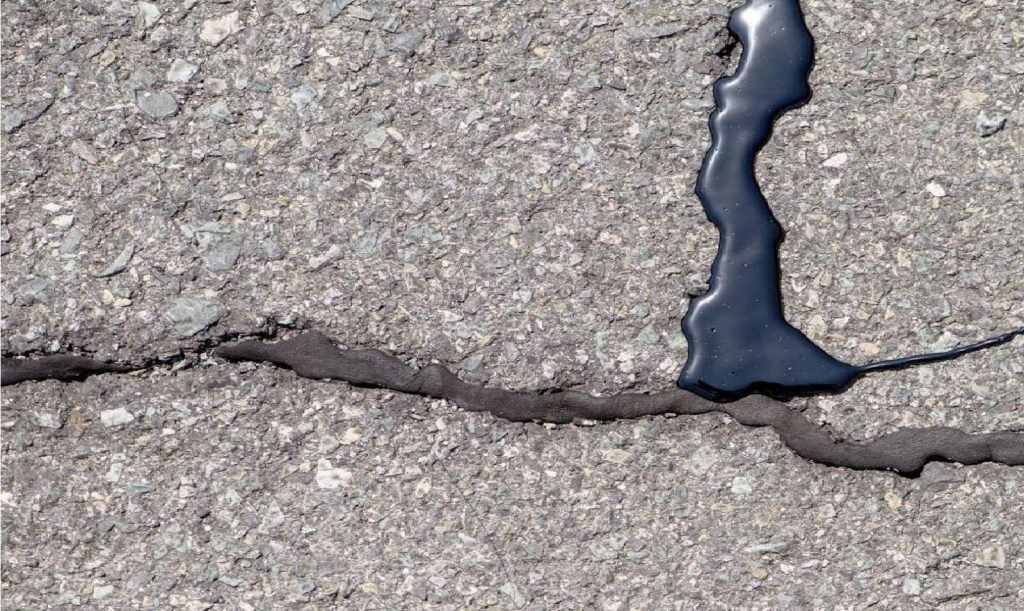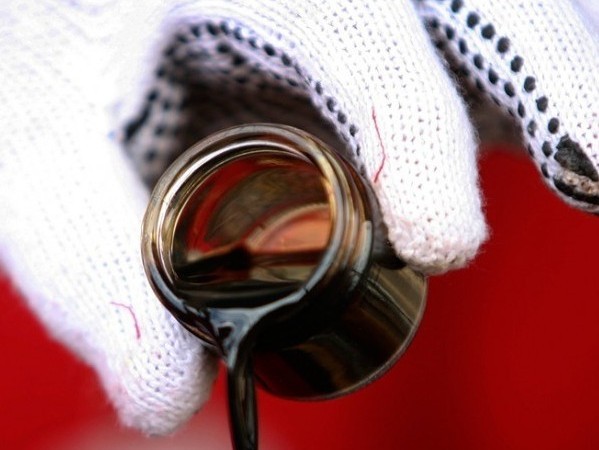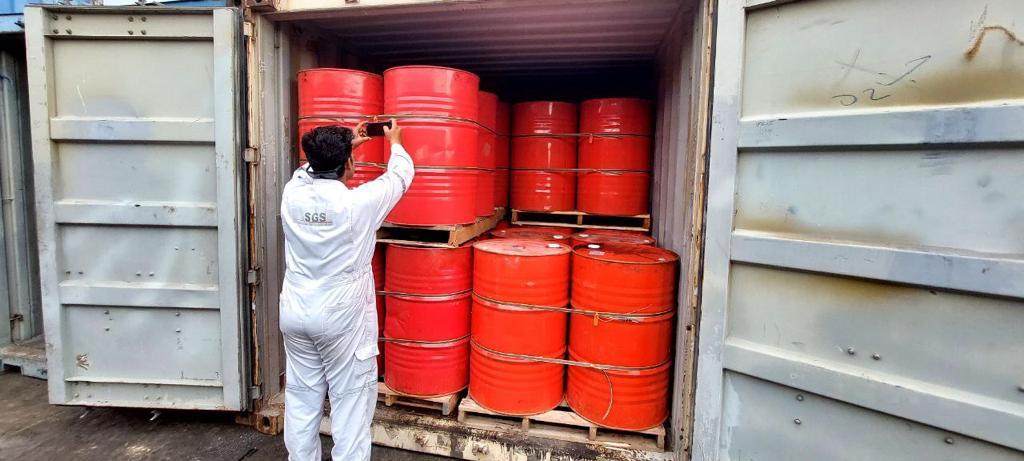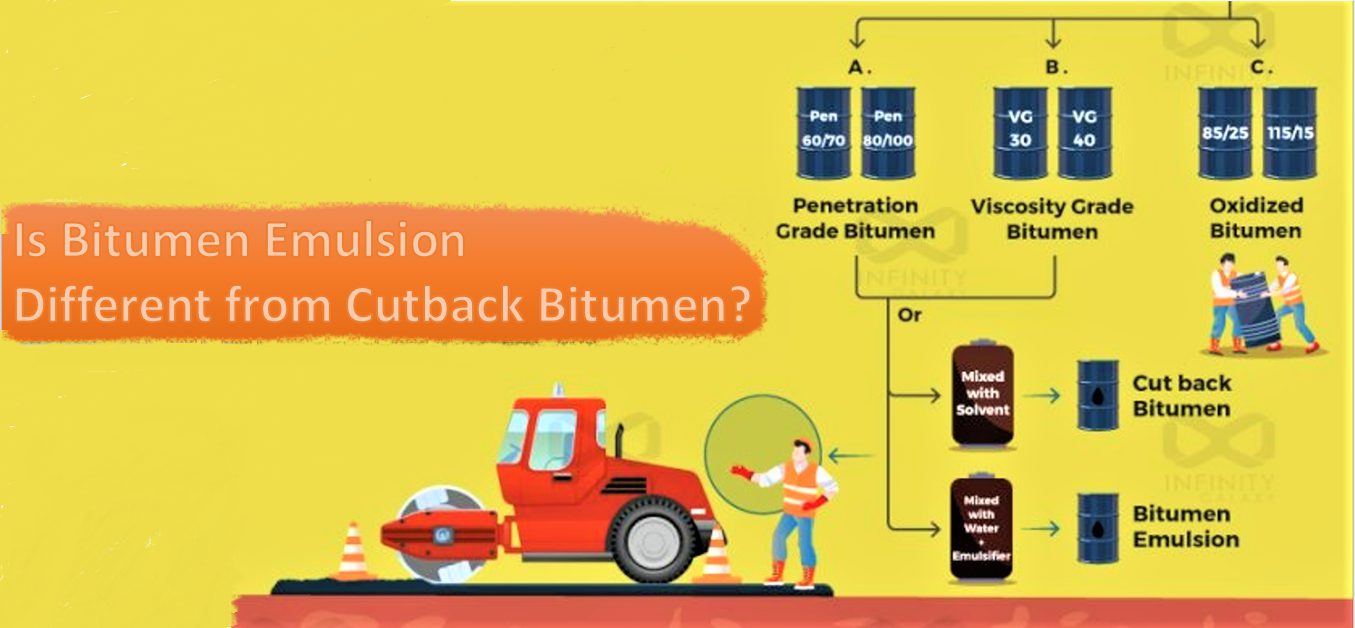Bitumen emulsion is classified into different types based on the electrical charge of fine drops of bitumen and the setting time of bitumen content. These two factors are controlled by the emulsifier.
The degree of hardness and viscosity of bitumen is also effective in grading types of emulsion bitumen.
Now that you have gained general knowledge, let’s take a deeper look at the factors mentioned above and learn more about the grades and types of bitumen emulsions.
Types of Bitumen Emulsion
Bitumen emulsions are classified primarily based on the electrical charge of the bitumen droplets. The electrical charge of bitumen particles can be negative, positive, or neutral, which are known as anionic, cationic, and non-ionic emulsion bitumen respectively.
Based on setting time, each of the anionic, cationic and non-ionic bitumen emulsions are divided into slow setting time (ss), medium setting time (ms), and rapid setting time (rs) types.
What are Cationic, Anionic, and Non-ionic Bitumen Emulsions?
During the production of emulsion bitumen, bitumen and a mixture of water and emulsifier pass through the mill.
When fine particles of bitumen and emulsifier molecules attract each other, the bitumen particles take the electric charge of the emulsifier molecules.
The electrical charge of fine drops of bitumen in the water can be one of the following:
- Cationic emulsions
- Anionic emulsions
- Non-ionic emulsions
- Clay-stabilized emulsions
There is a common and simple way to identify the electrical charge of bitumen emulsion. In this method, to identify the charge type of the droplets, an anode and a cathode are placed in a container containing bitumen emulsion.
If the bitumen droplets are attracted to the anode, it is a cationic bitumen emulsion, and if the bitumen droplets are attracted to the cathode, it is an anionic bitumen emulsion.
If the bitumen particles do not go toward the anode or cathode and do not move in any direction, the bitumen emulsion is a non-ionic type.
Cationic Bitumen Emulsion
The bitumen droplets in cationic emulsions carry a positive charge. Cationic bitumen emulsion is the most widely used bitumen emulsion in road construction to repair and maintain the road surface from damage. They have excellent adhesion to wet surfaces, making them ideal for road construction and maintenance, especially in damp conditions.
Anionic Bitumen Emulsion
Anionic emulsions have negatively charged bitumen droplets. The application of anionic bitumen is less than cationic bitumen in road construction.
Non-ionic Bitumen Emulsion
Non-ionic emulsions have neutral-charged bitumen droplets. They are rarely used on roads. This type of bitumen emulsion are mainly workable in technology-related fields.
Clay-stabilized Bitumen Emulsions
In Clay-stabilized bitumen emulsion, fine powder of clay and bentonite act as emulsifiers. This type of bitumen emulsion is used in industrial works.
Read about Application of Bitumen Emulsion
What are Rapid, Medium, and Slow Setting Bitumen Emulsions?
The time that is taken to stick the bitumen on the surface is called setting time. The chemical properties of the emulsion are highly dependent on the type of emulsifier that is used in it. If the emulsifier is compatible with the bitumen, it takes a long time for the bitumen to break.
According to the setting time, emulsion bitumen is classified into the following three groups:
Slow Setting Bitumen Emulsion (SS)
In this type, bitumen and water are not separated from each other easily. This emulsion bitumen sticks on the surface when water vaporizes completely.
Medium Setting Bitumen Emulsion (MS)
Emulsion bitumen with the medium setting time will dry and its property is similar to the bitumen property about 2 hours after applying it on the desired surface.
Rapid Setting Bitumen Emulsion (RS)
As soon as this group of emulsion bitumen is sprayed on a surface, bitumen and water separation occurs and the bitumen sticks to the surface.
Bitumen Emulsion Naming Strategy
Bitumen emulsion types and grades are identified by abbreviations. In road construction, naming different grades of bitumen emulsion depends on the below factors respectively:
1- Electrical charge
The name of bitumen emulsions with positive bitumen particles starts with “C”. If bitumen particles have negative charges, bitumen emulsion has no indication.
For example, CMS is a cationic bitumen emulsion and MS is the anionic one.
2- Setting Time
After specifying the charge of the particles with the letters mentioned above, they are classified into three groups based on their setting time:
Slow Setting => SS
Medium Setting => MS
Rapid Setting => RS
For example, CRS is a cationic bitumen emulsion with a rapid setting time.
3- Hardness of pure bitumen
In the case of emulsion bitumen produced from pure bitumen that is harder, it is indicated by the letter “h” following the electric charge and setting time. The letter “s” indicates soft pure bitumen.
For example, CSS-h is made from harder bitumen than CSS-S
4- Viscosity of bitumen emulsion
To indicate how viscous the bitumen emulsion is, the two numbers of 1 and 2 are added to the end of the bitumen emulsion short name.
Number 1 indicates lower viscosity and number 2 indicates high viscosity values.
For example, CSS-h1 has a lower viscosity than CSS-h2.

Bitumen Emulsion Grades
Bitumen emulsion grades are described in the following with a brief description of their applications.
RS-1 Bitumen Emulsion
RS-1 is an anionic bitumen emulsion with a rapid setting that has a low viscosity. It is applicable in protective asphalt like one or multiple-layer seal coats and sand seals.
RS-2 Bitumen Emulsion
RS-2 is an anionic bitumen emulsion that has a rapid setting. RS-2 has a higher viscosity than RS-1 and can be used in one or multiple-layer seal coat and sand seal applications instead of RS-2. Also, it can apply as the sandwich seal and cape seal.
MS-1 Bitumen Emulsion
MS-1 is an anionic bitumen emulsion with a medium setting time. It is used in protective asphalt, like sand seals.
Diluted MS-1 is also used in coating applications like fog seal and tack coat.
MS-2 Bitumen Emulsion
Grade MS-2 is an anionic bitumen. It has a medium setting time and higher viscosity than MS-1.
MS-2 is applicable on bitumen coatings without stone materials like the prime coat.
SS-1 Bitumen Emulsion
SS-1 is a slow-setting anionic bitumen that has a lower viscosity. SS-1h is a harder type of SS-1.
Both of them are used in micro surfacing to protect the asphalt. Also, its thin layers are used in all applications of bitumen surfacing like Fog seal, Prime coat, tack coat, etc.
CRS-1 Bitumen Emulsion
CRS 1 is a cationic rapid setting type of bitumen emulsion. It contains about 40% aqueous solution and 60% bitumen. The main application of CRS-1 is in road construction. It is used as a coat.
In tack coat application, CRS-1 is sprayed on the soil surface before asphalt is poured on the road.
This thin layer of emulsion bitumen is very suitable for clay and sand soils. These types of soils have a negative electric charge. On the other hand, CRS-1 has positive fine drops of bitumen. As a result, CRS-1 can absorb soil particles and maintain them.
CRS-2 Bitumen Emulsion
Cationic bitumen emulsion CRS-2 is a rapid setting type with high viscosity than CRS-1. It is used to protect asphalt by applying on the surface as one and multiple layers of seal coat, sand seal, sandwich seal, and cape seal.
CSS-1 Bitumen Emulsion
Bitumen Emulsion CSS1 or CSS1 tack coat is a Cationic Slow Setting type bitumen emulsion consists of approximately 40% water and cationic emulsifiers and different types of additives and 60% bitumen. The main applications of bitumen emulsion CSS1 are as below: Bitumen Sheet Membrane, Prime Coat, Seal Coat, Slurry Seal, Fog Seal, and Coating the Pipelines.
CSS-1h Bitumen Emulsion
CSS-1h is a harder type if CSS-1 which can be used in slurry seal applications.
To protect the asphalt surface from erosion, bitumen emulsion and rounded sand are mixed together. Then a thin layer of that mixture is applied to the asphalt surface.
CSS-1 and CSS-1h types of bitumen emulsion can be used as a coating surface such as fog seals, prime coat, tack coat, etc.
K1-60 Bitumen Emulsion
Bitumen Emulsion K1-60 or K160 tack coat is the Cationic Rapid Setting type bitumen emulsion. The bitumen content of bitumen emulsion K1-60 is approximately 57% and the rest of the emulsion is water, cationic emulsifier and additives. The main applications of bitumen emulsion K1-60 is in the tack coat and surface treatment. It can be used in: Single surface treatment, Multiple surface treatment, and Sand seal.

If you have any inquiries for bitumen emulsion, keep in contact with us via comment section. Our experts will guide you.








